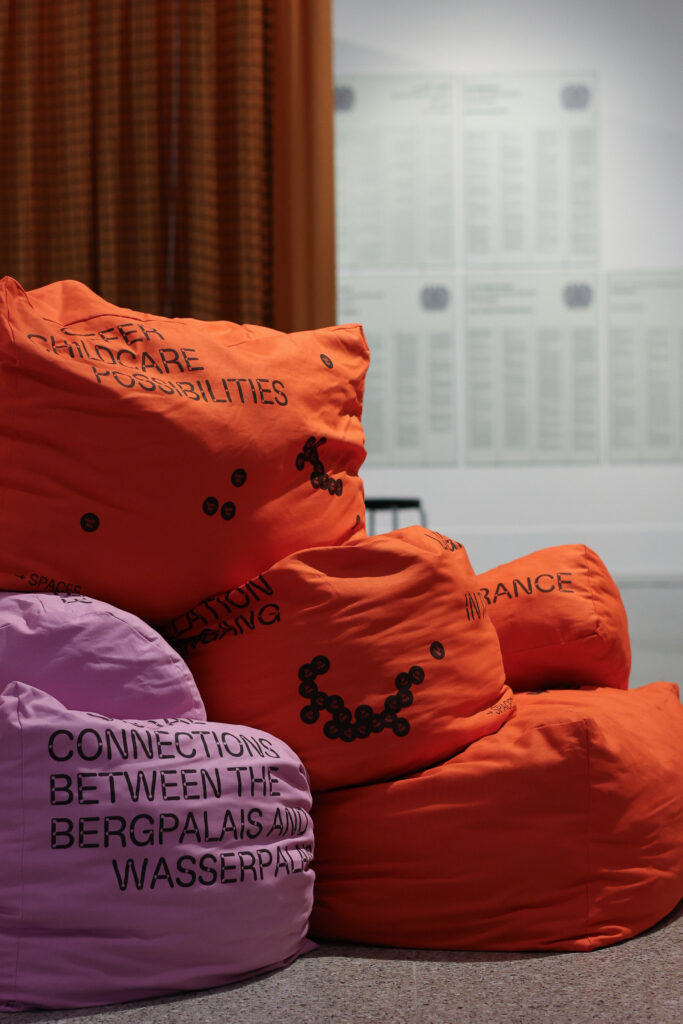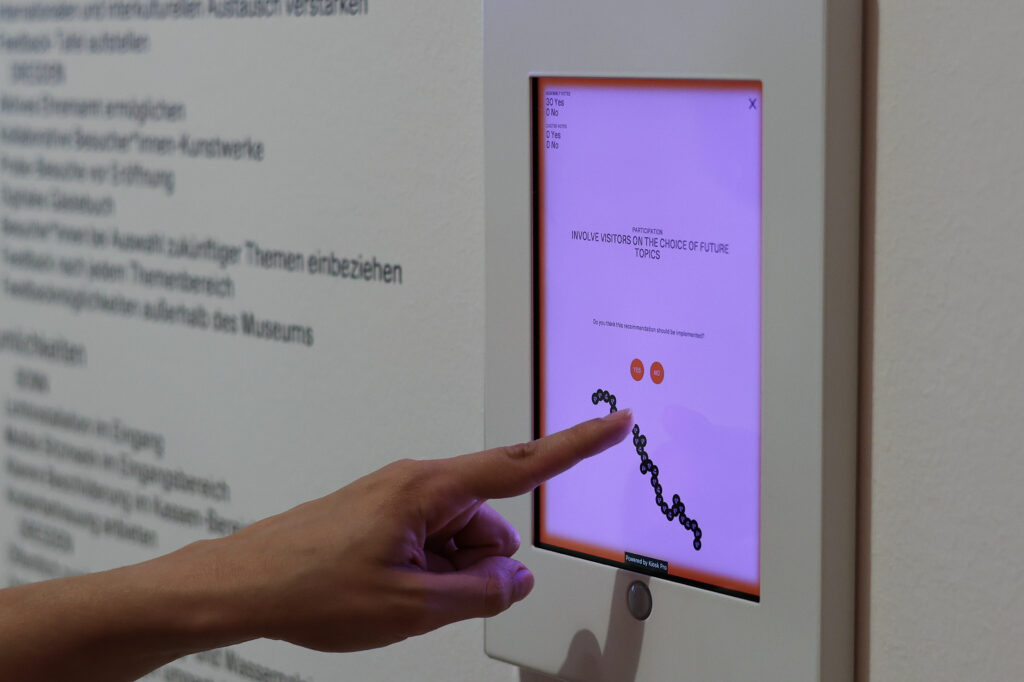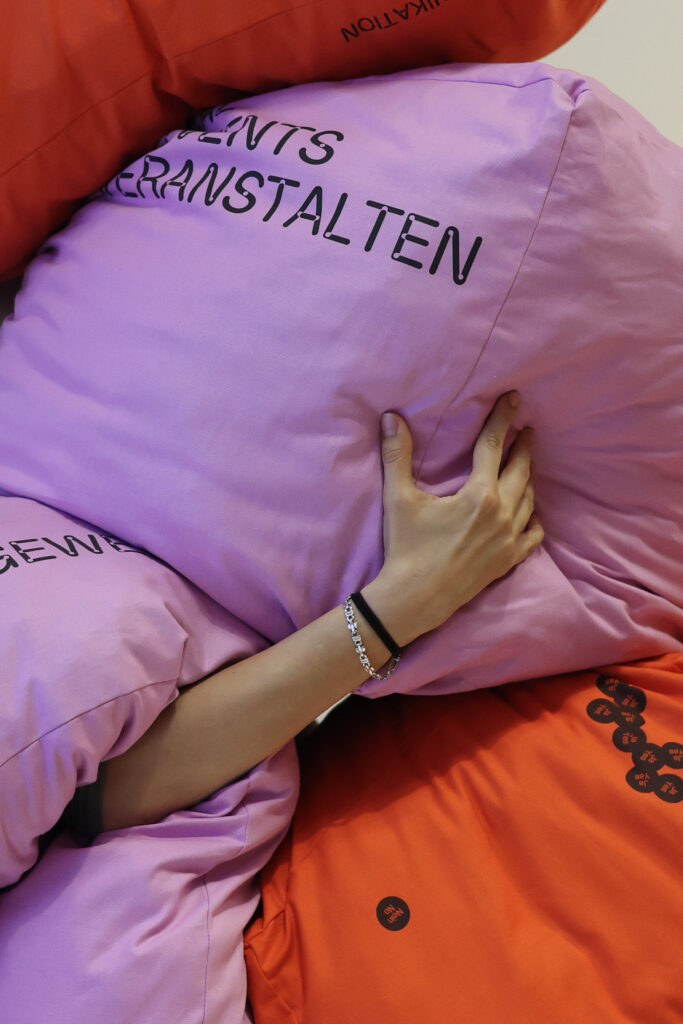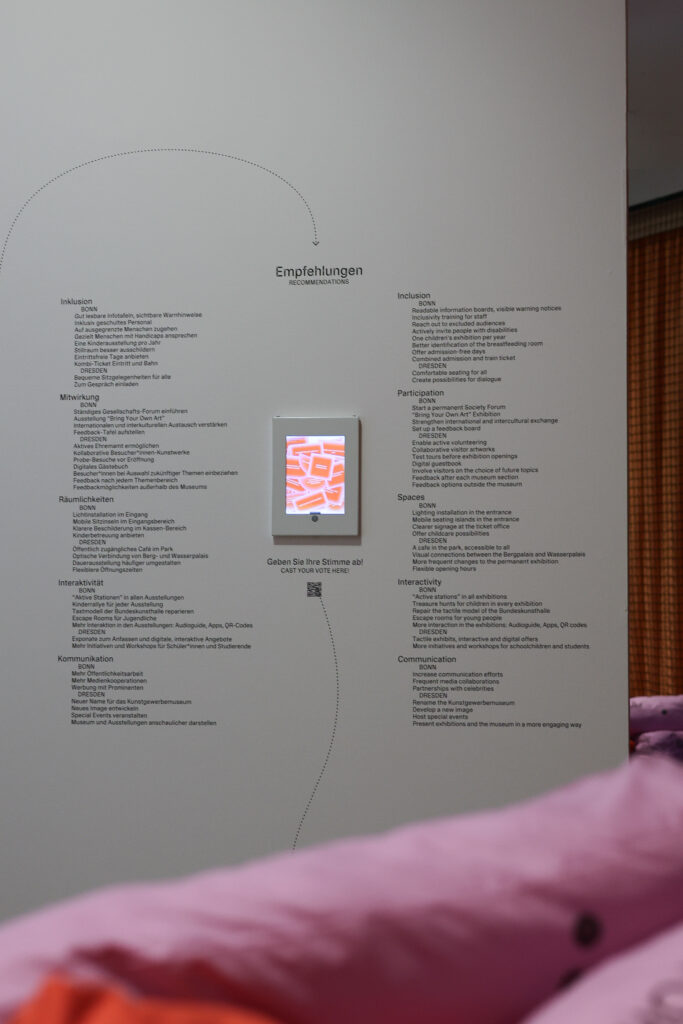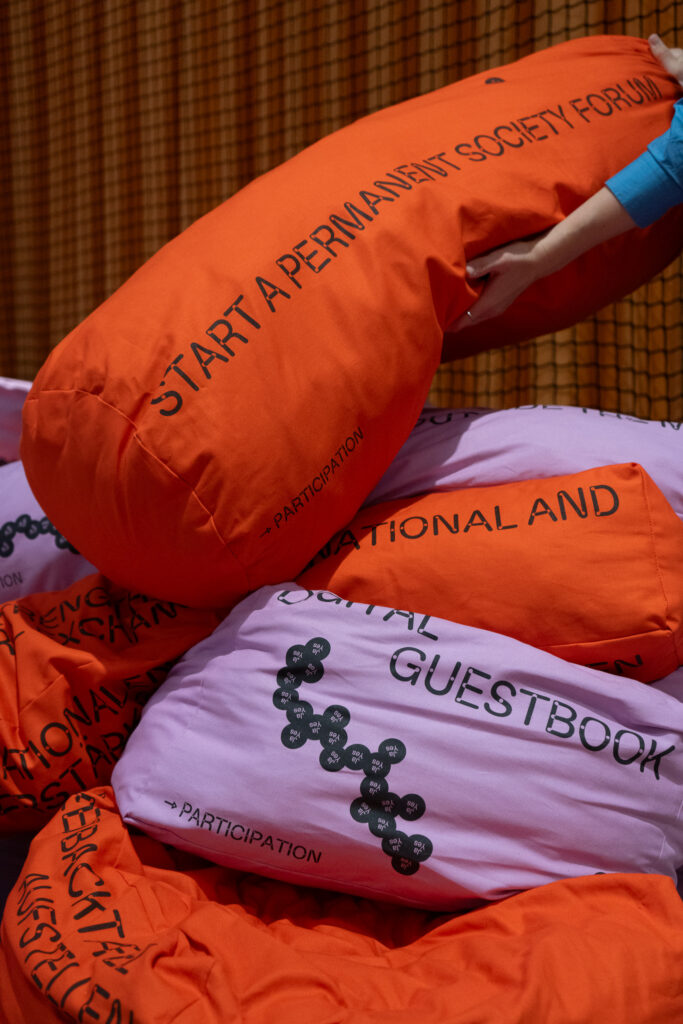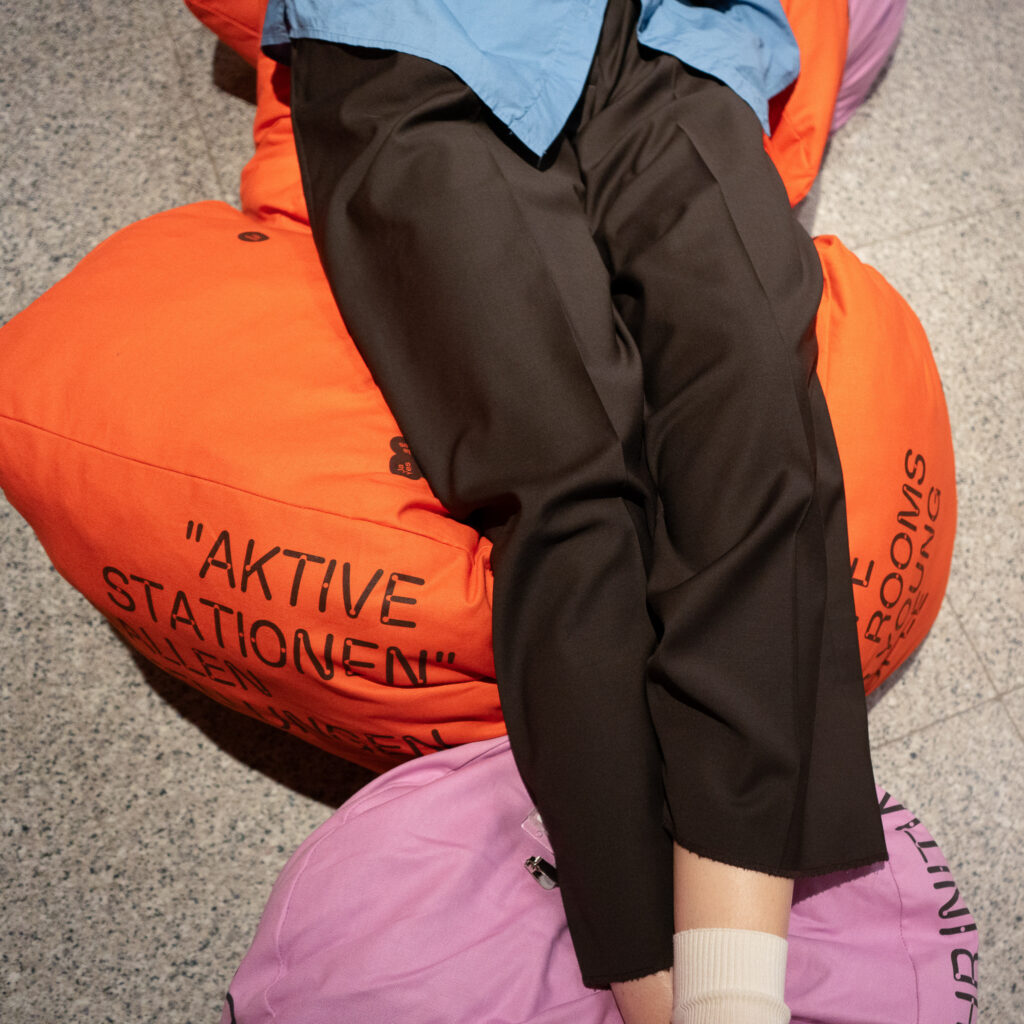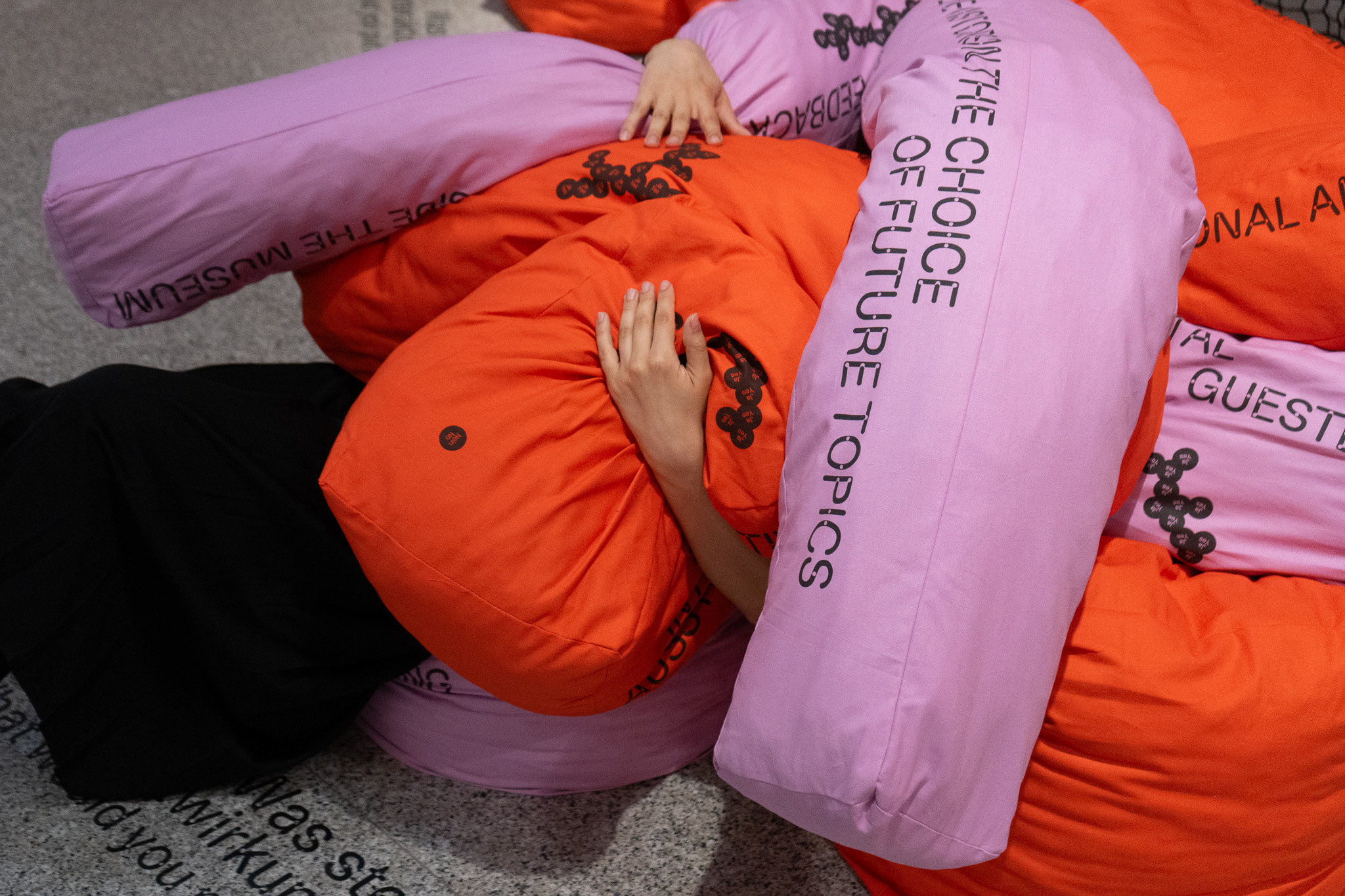
May, 2024
Citizens’ assemblies are a complex matter. How do they come about, how are the participants selected, how are the groups put together, how does the process work, what’s the outcome? And how do you present all of this?
The two citizens’ assemblies that took place in Bonn and Dresden in the run-up to the For All! Redesigning Democracy exhibition were a novelty in this form: on the one hand, citizens selected by lot from both cities were asked to develop ideas and recommendations on how the Bundeskunsthalle in Bonn and the Kunstgewerbemuseum in Dresden could be made more inviting places for everyone in the future. On the other hand, the citizens’ councils — titled “Gesellschaftsforum” (Society Forum) — were themselves part of the participatory exhibition concept for All In! Redesigning Democracy.
To do justice to the complexity of the requirements and the process, we commissioned four graduates of the MA Information Design program at the Design Academy Eindhoven to develop infographics and a spatial installation for the exhibition (Louisa Wolf / art direction, Jennifer Carniel / design, Augustina Lavickaitė / design, Susanna Tomassini / design, Marco Ferrari / artistic supervision).
The overall installation also included a documentary film by Karnik Gregorian (director) and Uwe Wrobel (cinematography), which was shown on five channels.
The work of the Design Academy Eindhoven graduates can be described in three parts. Firstly, there was a series of classic, clear infographics showing the process: the two cities, the different participants and their roles as well as collaboration, the selection process and the composition of the participants, the course of the four assembly weekends and finally the recommendations of the two Gesellschaftsforums.
Secondly, the designers sorted all the recommendations from both forums into overarching themes: interactivity, inclusion, participation, spaces and communication. Each recommendation was printed on a cushion and the beanbags were stacked in piles, organized by topic. Visitors to the exhibition were invited not only to sit on the cushions, but also to rearrange them – and thus the printed recommendations – according to their own priorities. If, for example, the recommendation “more hands-on exhibits” was buried under a pile of other recommendations, then it should be taken out and put on top!
Thirdly, the recommendations were also listed on a separate website. There, visitors could not only see how many votes the recommendations received at the end of the deliberations. They were also invited to vote for individual recommendations themselves.
